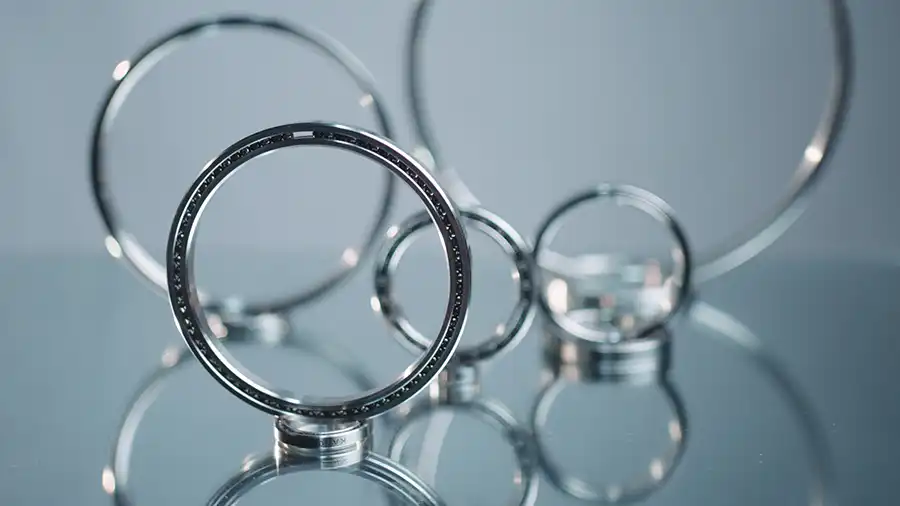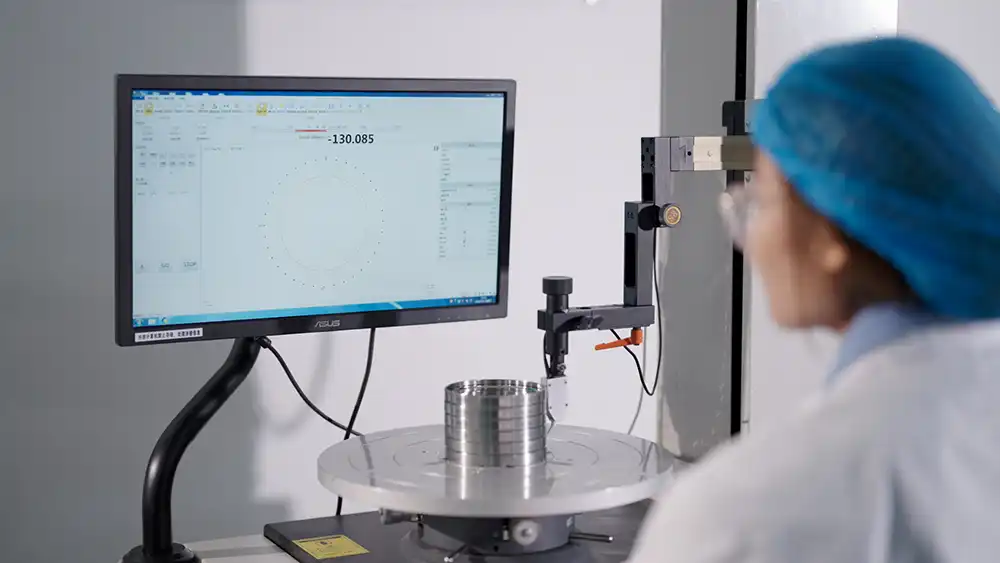What are the Load Capacities of Thin Section Ball Bearings?
Thin section ball bearings represent a critical component in modern engineering and mechanical design, offering unique capabilities in applications where space, weight, and precision are paramount. These specialized bearings are characterized by their remarkably slim cross-sections, which enable them to provide exceptional performance in compact and weight-sensitive environments. Understanding their load capacities is essential for engineers, designers, and professionals across various industries, from aerospace and robotics to medical devices and precision machinery.

How Do Thin Section Ball Bearings Differ from Conventional Bearings?
Thin section ball bearings distinguish themselves through their remarkably reduced wall thickness compared to standard ball bearings. This unique design philosophy emerges from the critical need to minimize bearing cross-section while maintaining robust mechanical performance. Traditional ball bearings typically feature substantial wall thicknesses that provide inherent structural rigidity, whereas thin section bearings achieve equivalent strength through sophisticated engineering and precise material selection.
The fundamental difference lies in their geometric proportions and load-bearing mechanisms. Conventional bearings rely on substantial material volume to distribute loads, whereas thin section bearings leverage advanced metallurgical techniques, precision manufacturing, and innovative ball path geometries. Manufacturers employ high-strength materials like chromium steel, stainless steel, and specialized alloys to compensate for reduced wall thickness.

Engineers must carefully consider several critical factors when evaluating thin section ball bearings' load capacities. These include:
1. Material Composition: High-grade bearing steels with superior hardness and wear resistance are fundamental. Chrome steel (AISI 52100) remains the most prevalent, offering exceptional load-bearing capabilities despite minimal cross-section.
2. Ball Path Precision: Microscopic tolerances in ball raceway design directly influence load distribution. Manufacturers utilize advanced CNC machining and grinding technologies to create ultra-precise ball tracks that maximize load-carrying potential.
3. Contact Angle Optimization: The ball-race contact angle significantly impacts load capacity. Thin section bearings often incorporate optimized contact geometries that enhance load distribution across minimal cross-sections.
4. Lubrication Strategies: Specialized lubricants with enhanced viscosity and extreme pressure additives compensate for reduced bearing mass, enabling more efficient load transfer and minimizing friction-induced wear.
Practical applications demonstrate remarkable load-handling capabilities. A typical thin section ball bearing measuring merely 25mm in diameter and 5mm in cross-section can support radial loads exceeding 500 newtons while maintaining micron-level precision. Aerospace applications, for instance, leverage these bearings in gimbal systems, satellite mechanisms, and high-precision robotic joints where weight reduction and compact design are paramount.

What Factors Determine the Load Capacity of Thin Section Ball Bearings?
Load capacity in thin section ball bearings represents a complex interplay of multiple engineering parameters. Unlike conventional bearings, these specialized components require nuanced assessment beyond simple static and dynamic load ratings. Engineers must holistically evaluate geometric, material, and operational characteristics to accurately predict performance.
Static load capacity emerges as the primary metric, representing the maximum stationary load a bearing can support without causing permanent deformation. For thin section bearings, this involves intricate calculations considering:
- Material Yield Strength: The fundamental limit of load-bearing potential
- Ball-Race Contact Stress: Microscopic deformation thresholds
- Bearing Geometry: Distribution of load across minimal cross-section
Dynamic load capacity introduces additional complexity, representing the bearing's ability to withstand cyclic loading during rotational motion. Key determinants include:
1. Fatigue Resistance: Advanced metallurgical treatments like surface hardening and precision heat treatment enhance load-bearing endurance.
2. Surface Finish: Ultrasmooth raceway surfaces, achieved through precision grinding, minimize localized stress concentrations.
3. Ball Quality: Perfectly spherical balls with minimal surface imperfections distribute loads more uniformly.
Emerging manufacturing technologies continually push thin section bearing performance boundaries. Ceramic hybrid bearings, incorporating ceramic balls within steel races, represent a groundbreaking approach. These advanced bearings offer:
- Reduced weight
- Enhanced corrosion resistance
- Superior thermal stability
- Increased load-carrying potential
Computational modeling and finite element analysis have revolutionized thin section bearing design. Modern simulation techniques enable engineers to predict load capacities with unprecedented accuracy, allowing for optimized geometries that maximize performance while minimizing material usage.
How Can Engineers Select the Right Thin Section Ball Bearings for Specific Load Requirements?
Selecting appropriate thin section ball bearings demands a systematic, multifaceted approach. Engineers must synthesize comprehensive performance data, application-specific requirements, and detailed bearing specifications to make informed decisions.
The selection process involves evaluating:
1. Load Type: Understanding whether loads are primarily radial, axial, or combined
2. Operating Environment: Temperature, contamination levels, and potential chemical exposures
3. Speed Ranges: Rotational velocities and associated centrifugal stress
4. Precision Requirements: Tolerance for vibration and alignment errors
Computational tools and standardized selection matrices have emerged as critical resources. Manufacturers now provide sophisticated online configurators that enable rapid, data-driven bearing selection. These platforms integrate:
- Parametric load calculators
- Environmental compatibility matrices
- Performance prediction algorithms
Emerging trends indicate increasing customization capabilities. Some manufacturers offer bespoke thin section bearings tailored to hyper-specific application requirements, further expanding load-handling potential across diverse industries.
Conclusion
Thin section ball bearings represent a pinnacle of mechanical engineering, offering unprecedented load-carrying capabilities within remarkably compact geometries. As technological demands continue evolving, these specialized components will undoubtedly play increasingly critical roles across high-precision industries.
Luoyang Huigong Bearing Technology Co., Ltd. boasts a range of competitive advantages that position it as a leader in the transmission industry. Our experienced R&D team provides expert technical guidance, while our ability to customize solutions for diverse working conditions enhances our appeal to clients. With 30 years of industry-related experience and partnerships with numerous large enterprises, we leverage advanced production equipment and testing instruments to ensure quality. Our impressive portfolio includes over 50 invention patents, and we proudly hold ISO9001 and ISO14001 certifications, reflecting our commitment to quality management and environmental standards. Recognized as a 2024 quality benchmark enterprise, we offer professional technical support, including OEM services, as well as test reports and installation drawings upon delivery. Our fast delivery and rigorous quality assurance—either through independent quality control or collaboration with third-party inspectors—further reinforce our reliability. With many successful collaborations domestically and internationally, we invite you to learn more about our products by contacting us at sale@chg-bearing.com or calling our hotline at +86-0379-65793878.
References
1. SKF Thin Section Bearing Design Guide, SKF Group Publication, 2022
2. ABEC Precision Bearing Standards, ABEC Technical Manual, 2021
3. Advanced Materials in Bearing Design, Journal of Mechanical Engineering, Vol. 45, 2023
4. Computational Modeling of Bearing Load Capacities, International Journal of Machine Tools, 2022
5. Ceramic Hybrid Bearing Technologies, Materials Science Review, Vol. 38, 2023
6. Precision Manufacturing Techniques in Bearing Production, Manufacturing Engineering Journal, 2022
7. Load Distribution Mechanisms in Thin Section Bearings, Mechanical Design Review, Vol. 29, 2021
8. Aerospace Applications of Thin Section Bearings, Aerospace Engineering Quarterly, 2023
9. Lubrication Strategies for High-Precision Bearings, Tribology International Journal, 2022
10. Emerging Trends in Bearing Material Science, Advanced Engineering Materials, Vol. 56, 2023

